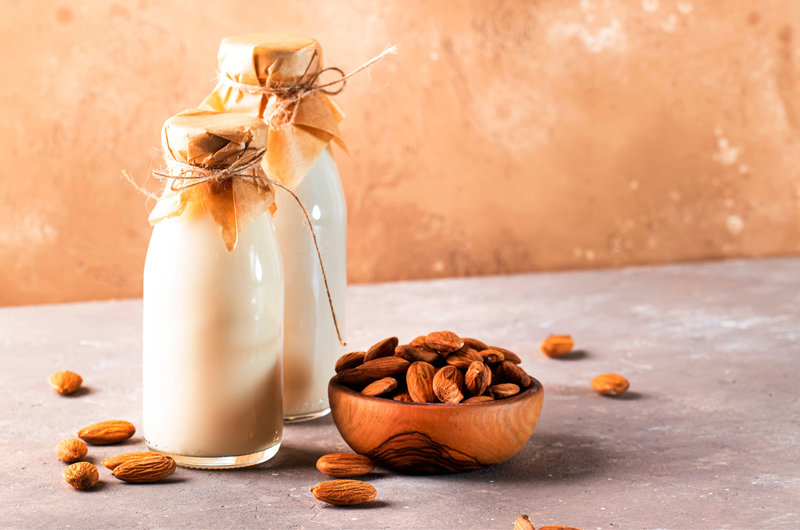
When using the rotary evaporator to produce alcohol-free distillates, known as hydrosoles, one often encounters the same challenges: The final product is often not aromatic enough, too watery and one is bothered by a lack of texture to the flavors presented.
Therefore, it should be noted that the concentration of aroma sources in hydrosoles is significantly higher than in the case of re-distillation with an alcohol - if a comparable product is available, the rule of thumb of 2.5 times the concentration or amount can usually be used as a guide.
In the hydrosol of almond and dill described here, a very quite simple "trick” is used by reaching for almond milk, which simplifies the aroma transfer to the hydrosol.
Preparation:
Before distillation, the almond milk should ideally be enriched with the dill in a sous vide bath at 50 degrees for two hours. If you don't have a sous vide available, you can put it in a vacuum bag or locked container at room temperature for 6 hours. Then fill the evaporation flask with it (including the dill stems) and distill with the following parameters: 110 rpm and 50 degree heating bath. Although the boiling point should be fairly constant, due to the increased danger of "boiling over" by the almond milk, it is advisable to work more cautiously towards the boiling point from a starting point of 250 mbar. The end vacuum is already reached at 80 mbar.
The finished hydrosol has a velvety, but restrained, almond taste, yet very clear and clean dill notes. Since alcohol was not used as a catalyst, the recommendation is to add sugar to the hydrosol after distillation if it is to serve as a drink base. By adding syrup sugar in a ratio of 1:3 to the hydrosol, a non-alcoholic liqueur is created, so to speak, which also develops a more distinct almond flavor thanks to the sugar, without the dill losing its strength.
This alcohol-free "liqueur" is a wonderfully flexible basis for sophisticated cocktails without any percent by volume. Whether converted into an elegant sour variant with a little acid and a tannin-containing tea or with a gentian infusion as a starting point for an alcohol-free short drink, there are many processing options for this product. The ingredients can be bought all year round without problems and yet the combination and special processing will open up a whole new dimension of alcohol-free drinks for many.
Have fun experimenting & cheers
